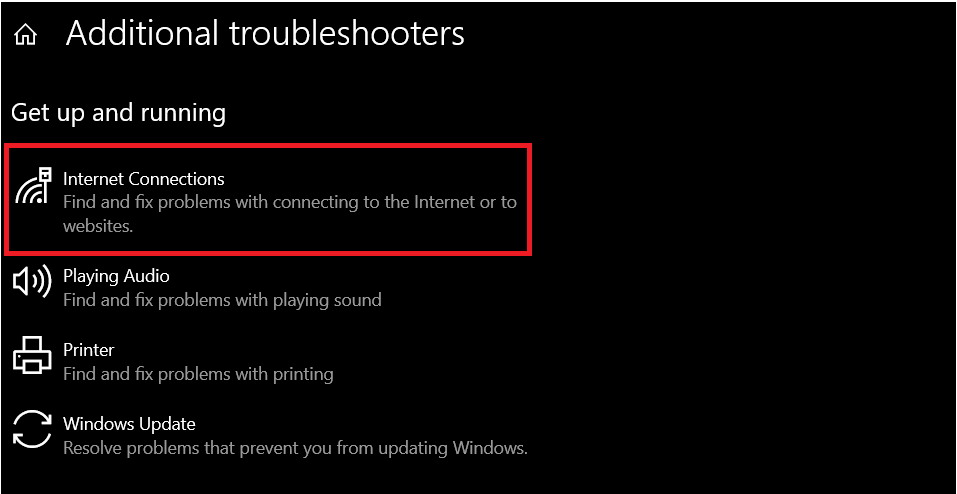Antimalware Service Executable is an essential component of Windows Defender, but it can also cause high CPU usage, resulting in sluggish performance.
If you are wondering why is antimalware service executable running, here is a simple answer:
Antimalware Service Executable is a core component of Windows Defender responsible for scanning and protecting your computer from malware threats. It’s running to provide real-time protection against malware infections, perform system scans, and update its software.
In this article, we’ll discuss everything you need to know about this program, how to stop it from using too much CPU, and the steps you can take to troubleshoot any issues that may arise.
This Article Covers:
What Is Antimalware Service Executable?

Antimalware Service Executable, or “MsMpEng.exe,” is a crucial component of Microsoft’s Windows Defender, which provides real-time protection against viruses, malware, and other harmful software.
While it plays an essential role in keeping your computer secure, some users may experience issues with high CPU usage, which can slow down their system’s performance.
Why Is It Running on my PC?
AMSE is included in all Windows 10 devices and is turned on by default. This means that if you are using Windows 10, AMSE is running on your PC whether you like it or not. This is because Microsoft wants to ensure that your system is always protected against malware threats.
By running AMSE in the background, Microsoft can provide real-time protection to Windows users without requiring them to take additional steps.
Why Is It Using So Much CPU?
One of the users’ most common complaints about AMSE is that it uses too much CPU, causing their computers to become slow and unresponsive. However, there are several reasons why AMSE may need to use more CPU on your system, such as the following:
- Your PC is running a scan: When AMSE scans your system, it uses many CPU resources to scan each file for potential malware threats. If you have many files on your system, this process can take a long time, and your computer may need to be more active during the scan.
- There is a conflict with another program on your system: Some third-party antivirus programs may conflict with AMSE and cause it to use more CPU resources than necessary. Therefore, if you have another antivirus program installed on your system, consider uninstalling it to see if it resolves the issue.
You can also download YouTube videos without any software if you want to learn more about how to fix your AMSE.
Should I Disable Antimalware Service Executable? What Happens If I do?
While disabling AMSE on your PC is possible, we do not recommend doing so.
This is because disabling AMSE will leave your system vulnerable to malware threats, which can cause significant damage to your system. AMSE is designed to provide real-time protection against malware threats, and disabling it will remove this protection.
Instead of disabling AMSE, we recommend taking steps to optimize its performance. You can do this by scheduling scans during off-peak hours when you are not using your computer. This will protect your system against malware threats while minimizing the impact on your computer’s performance.
If you disable AMSE, consider installing another antivirus program to provide real-time protection against malware threats. However, it is essential to remember that installing multiple antivirus programs on your system can cause conflicts and may lead to performance issues.
If you still want to disable the Antimalware Service Executable process temporarily, here’s what you can do:
- Press “Ctrl + Shift + Esc” to open Task Manager.
- Look for Antimalware Service Executable.
- Next, right-click on it and click “End task.”

How to Stop Antimalware Service Executable from Using Too Much CPU
If you are experiencing high CPU usage by Antimalware Service Executable, there are several methods you can try to reduce its impact on your system. Here are they:
Method 1: Adjust the Windows Defender Settings
The first method involves adjusting the settings of Windows Defender to reduce the CPU usage of the antimalware service executable. To do this, simply follow these steps:
- First, type “Windows Security” in the search bar and click on the app.

- Click “Virus & threat protection.”

- Next, click “Manage settings” under “Virus & threat protection settings.”

- After that, ensure the “Real-time protection” toggle is turned off.

This will turn off real-time protection, meaning Windows Defender will no longer scan your system in real time for potential threats. However, it is essential to note that turning off real-time protection leaves your system vulnerable to malware attacks.
Therefore, it is recommended that you turn real-time protection back on after completing resource-intensive tasks.
Moreover, you might also be interested in preventing unwanted emails. Here’s a guide on how to block emails on Gmail.
Method 2: Exclude Specific Files or Folders
The second method excludes specific files or folders from being scanned by Windows Defender. To get started, follow these steps:
- First, open “Windows Security” and select “Virus & threat protection.”

- Click “Manage settings” under “Virus & threat protection settings.”

- Next, scroll down to “Exclusions” and click “Add or remove exclusions.”

- After that, click on “Add an exclusion” and choose either “File” or “Folder.”

- Finally, select the file or folder you want to exclude from being scanned.
Doing this method will prevent Windows Defender from scanning the selected file or folder, which can reduce the CPU usage of the antimalware service executable. However, it is important to note that excluding essential files or folders can leave your system vulnerable to malware attacks.
Method 3: Change the Windows Defender Schedule
The third method involves changing the schedule of Windows Defender scans. By default, Windows Defender is scheduled to perform quick scans once a day and full scans once a week. However, you can change the schedule to reduce the antimalware service executable CPU usage. Here’s how to do it:
- First, open “Windows Security” > “Virus & threat protection.”
- Next, click “Scan options.”

- Select “Windows Defender Offline scan” or “Custom scan.” Then, click “Scan now.”

This method will change the schedule of Windows Defender scans, which can reduce the CPU and disk usage of the antimalware service executable. In addition, you can perform scans when you are not using your computer, such as overnight, to minimize the impact on your system’s performance.
Method 4: Use a Third-party Antivirus Software
The fourth method involves using third-party antivirus software instead of Windows Defender. Many third-party antivirus software options are available, and they often have lower CPU usage than Windows Defender. To use third-party antivirus software, follow these steps:
- Research and select reputable third-party antivirus software, such as Avira, Avast, McAfee, and Bitdefender.
- Download and install the software on your computer.
- Follow the software’s instructions to set up and configure the antivirus protection.
This will replace Windows Defender with third-party antivirus software, which may have lower CPU usage and improve your system’s performance. However, it is essential to note that third-party antivirus software may incur additional costs and require more frequent updates than Windows Defender.
If your browser can’t download antivirus files, consider replacing it with the best alternative browsers.
How to Troubleshoot Antimalware Service Executable Acting Up
If you’re experiencing issues with Antimalware Service Executable on your computer, it’s essential to understand how to troubleshoot this problem. It can be challenging to pinpoint the exact cause of high CPU usage, but some basic steps can help to identify the problem. Here’s what you can do:
1. Check for Updates
Ensure your Windows Defender is up-to-date. An outdated program can cause many issues, and updating it can help prevent such problems.
2. Run a Scan
Run a full system scan using Windows Defender. This process can take some time, but it can help identify any malware causing high CPU usage.
3. Restart Your Computer
A simple restart can do wonders, as it can clear out any temporary files and processes causing issues.
4. Disable Real-Time Protection
This step should only be used as a temporary solution, but disabling real-time protection can help to reduce CPU usage. You should enable real-time protection as soon as possible, as this is one of the most critical components of Windows Defender.
5. Check for Conflicting Software
Ensure there are no conflicts with other security software or third-party applications that may be causing issues with Antimalware Service Executable.
Frequently Asked Questions
Is It Ok to Disable Antimalware Service Executable?
Now, this is a tricky question, as it’s not recommended to disable the Antimalware Service Executable entirely. Doing so would leave your computer vulnerable to malware attacks, and the consequences could be severe.
However, there are instances where temporarily disabling certain features may be necessary, as discussed in the previous section. It’s essential to remember that Windows Defender is one of the most critical components of your computer’s security, and disabling it entirely can lead to severe consequences.
Why Is the Antimalware Service Executable So High?
The Antimalware Service Executable can sometimes use a high amount of CPU, slowing down your computer. There are several reasons why this may occur:
- Scanning: One of the most common reasons for high CPU usage is scanning. The Antimalware Service Executable is designed to scan your computer for malware threats continually, and this process can be resource-intensive. Depending on the size of your hard drive and the number of files you have, scanning can take a long time and use a lot of CPU resources.
- Updates: Windows Defender is programmed to update regularly to keep up with the latest malware threats. These updates can also be resource-intensive, as they require a lot of processing power to download and install.
- Conflict with other software: Antimalware Service Executable may sometimes conflict with other security software or third-party applications, leading to high CPU usage.
Is It a Virus?
It’s common for users to assume that any program causing high CPU usage must be a virus, but that’s not always the case. In the case of the Antimalware Service Executable, it’s a core component of Windows Defender and is designed to protect your computer from malware threats.
However, it’s possible that malware could infect your computer and disguise itself as the Antimalware Service Executable, causing high CPU usage. If you suspect your computer is infected with malware, running a full system scan and removing any threats as soon as possible is essential.
Wrapping it Up
Overall, the Antimalware Service Executable is a legitimate process that is a part of the Windows Defender antivirus software. While it can consume a significant amount of system resources, especially during a scan, it is nothing to worry about and is essential for keeping your computer safe from malware and other security threats.
If you are experiencing performance issues, simply follow our guide to help reduce the impact of Antimalware Service Executable. Alternatively, look at these helpful courses to learn how to protect your computer from harmful malware and viruses.
Related:






